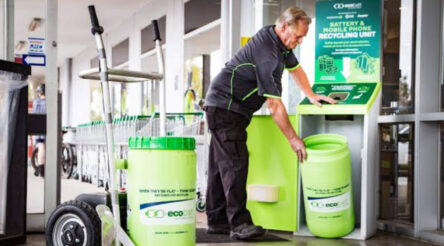A new deal for manufacturing – a strategy to support a new era in Australian manufacturing by Shay Chalmers

Our crowd sourced new deal plan for manufacturing post Covid-19 continues. Here Shay Chalmers writes about what we can do to turn this economic downturn into a manufacturing success story.
Research and evidence shows that the current economic downturn could result in the resurgence of local manufacturing – a new era in Australian manufacturing. To realise this, we need to learn from our past, and apply new ways to thinking, today and tomorrow.
The impact of the GFC
During the Global Financial Crisis, I was working in one of the hardest-hit areas, in one of the hardest-hit industries – steel manufacturing in Pittsburgh, USA. One by one, I watched our steel mills close down. They couldn’t afford to operate as the cost of raw materials exceeded the sale price of the product. For every one job that was lost in the steel industry, five additional jobs were lost in supporting businesses. Many of these jobs were also in manufacturing.
Demand and orders simply dried up. An industry that clothed and fed many families in our town was no longer able to sustain. Essentially, it was an impossible situation. There was no government aid or stimulus to increase infrastructure projects. There were no controls over what products were brought in from overseas or their quality. There were no policy changes to support the local industry.
If we pan to Australia during that time, according to the Advanced Manufacturing Growth Centre, 45,000 Australian manufacturing businesses closed down as a result of the GFC in 2008-2012. Although 39,000 new companies were formed during this time, this still left us with a national manufacturing deficit of 6,000 companies.
The Australian manufacturing sector has historically been one of the most volatile manufacturing industries in the world. We have in the past experienced swings in outputs which were twice as great as the USA.
Australian manufacturing has always been greatly affected by changes in the wider economy, exchange rate fluctuations and a high proportion of exports are key drivers of this.
Why this economic downturn is different
During the GFC we turned away from our manufacturing community, today we turn towards them. We are leaning into our manufacturers to support us during our most vulnerable time.
Our resilient, agile manufacturers are retooling and pivoting to support our nation. They are gearing up to not only produce the products that we need but also to produce them against the stringent quality standards that we as a nation can be proud to put our Australian Made brand against.
We are establishing new world-class testing facilities to ensure our products are safe and effective. We are controlling the quality of imports and ensuring that only approved products are used in, for example, our health system.
We are looking at this transition for many manufacturers, not just as a short-term pilot but a long-term product diversification strategy.
How does our manufacturing industry adapt and grow?
There are several things that we need to do to turn this economic downturn into an Australian manufacturing success story.
The journey I have been on assisting retooling manufacturers across our country, along with past experience, has highlighted a number of opportunities for improvement and steps we should take.
1. Review the use of disposable products and innovate the value chain
We as a society, have moved towards using disposable products. The medical industry is an excellent example of this. We’ve moved to disposable masks, gowns, face shields and even disposable curtains. The economic benefit of doing this made sense when the change was made a decade ago, but these are different times, and we are on the cusp of a new era.
In Queensland, we could supply the whole value chain for these products from our cotton growers and sheep farmers all the way through to our chemical engineers developing novel anti-viral / anti-microbial coatings to our textile scientists and sewing community.
We have the capability and capacity to build an entire eco-system around reusable health products. To do so, we need to build our capability to test these products, ensure our regulations align with the use of reusable and review our health procurement processes to ensure the cost is calculated over the product life and not just the purchase price.
2. Review our Local Procurement Policies
Manufacturing capability is something that needs to be nurtured and supported. If you don’t support local manufacturing when the times are good, then you won’t have the local knowledge and expertise to support you when times are bad.
Local manufacturers can be cost-competitive on a global scale if they are given the opportunity to do so. They don’t need financial handouts; they need long term security in the order books. How do we ensure that we support our manufacturers over the long term? Multi-year procurement contracts give our manufacturers the security they need to invest in process optimisation and automation. Long term procurement contracts are an enabler to advanced manufacturing and allow our manufacturers a chance to compete on a global scale.
3. Review our manufacturing capability for all critical supplies
This crisis has highlighted the need for local capability. In the health Personal Protective Equipment (PPE) space, for example, we now have the capability to manufacture many PPE products locally. Further analysis is needed as to what other sectors are at risk, what additional manufacturing and testing capability is required to ensure that we have protected our sovereign capability in our critical supply chains.
4. Ensure our newly created manufacturing capability can globally compete
It is essential that our manufacturing industry is set up to be sustainable in the future. Competing on cost alone against ultra-high volume manufacturing nations is not going to be a successful model for us. We need another way to differentiate.
Let’s use our skills of developing high quality, high products, and leverage our ingenuity and research in this space to build the next generation of products. To achieve this, collaboration is key. We need to find the right mechanism to connect our world-class researchers with our manufacturing community to get the best outcomes.
5. We need a National Manufacturing Plan
This plan must incorporate a national strategy for local procurement and an assessment of our critical supply chains. This needs to highlight what manufacturing capability we need here in Australia, and what is our roadmap to get there.
State and Federal governments can lead by example with a review of local procurement strategies and empower industry to follow suit. The development of this plan must understand the nuances of our manufacturing industries. They are made up of many subsectors which must be deeply understood in the development of a manufacturing roadmap.
Continuing to collaborate and support Australian manufactures when business turns to ‘the new normal’ is key to this successful transition. Positive economic impacts will not only benefit the manufacturing industry but the many others that depend on it too.
Shay Chalmers is Director at Strategic Engineering Australia.
@AuManufacturing’s new deal plan for manufacturing is brought to you with the support of Bosch Australia Manufacturing Solutions

Picture: Shay Chalmers
Subscribe to our free @AuManufacturing newsletter here.
@aumanufacturing Sections
Analysis and Commentary Awards Defence Manufacturing News Podcast Technology Videos










